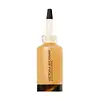What's inside
What's inside
 Key Ingredients
Key Ingredients

 Benefits
Benefits

 Concerns
Concerns

 Ingredients Side-by-side
Ingredients Side-by-side

Water
Skin ConditioningButylene Glycol
HumectantGlycerin
HumectantNiacinamide
SmoothingPolyacrylate-13
Phenylethyl Resorcinol
AntioxidantTranexamic Acid
AstringentVitis Vinifera Flower Cell Extract
MaskingPlankton Extract
Skin ConditioningTetrapeptide-30
Skin ConditioningArtemisia Capillaris Flower Extract
Skin ConditioningVibrio Alginolyticus Ferment Filtrate
AbrasiveAlteromonas Ferment Extract
Skin ConditioningTocopheryl Acetate
AntioxidantPolyisobutene
Polysorbate 20
EmulsifyingCaprylic/Capric Triglyceride
MaskingHydroxyacetophenone
AntioxidantPhytic Acid
Diethylhexyl Syringylidenemalonate
Skin ProtectingDisodium EDTA
Ethylhexylglycerin
Skin ConditioningPhenoxyethanol
PreservativeWater, Butylene Glycol, Glycerin, Niacinamide, Polyacrylate-13, Phenylethyl Resorcinol, Tranexamic Acid, Vitis Vinifera Flower Cell Extract, Plankton Extract, Tetrapeptide-30, Artemisia Capillaris Flower Extract, Vibrio Alginolyticus Ferment Filtrate, Alteromonas Ferment Extract, Tocopheryl Acetate, Polyisobutene, Polysorbate 20, Caprylic/Capric Triglyceride, Hydroxyacetophenone, Phytic Acid, Diethylhexyl Syringylidenemalonate, Disodium EDTA, Ethylhexylglycerin, Phenoxyethanol
Water
Skin ConditioningGlycerin
HumectantDiglycerin
HumectantDimethyl Isosorbide
SolventSaccharomyces Ferment Filtrate
HumectantPentylene Glycol
Skin ConditioningPolyglyceryl-4 Caprate
Emulsifying1,2-Hexanediol
Skin ConditioningGlycereth-26
HumectantNiacinamide
SmoothingBetaine
HumectantEmpetrum Nigrum Fruit Juice
Skin ConditioningPanthenol
Skin ConditioningYeast Extract
Skin ConditioningPavlova Lutheri Extract
Skin ConditioningCaprylic/Capric Triglyceride
MaskingOlea Europaea Fruit Extract
BleachingSodium Hyaluronate
HumectantCaprylyl Glycol
EmollientHyaluronic Acid
HumectantSodium Polyacrylate
AbsorbentAcrylates/Vinyl Isodecanoate Crosspolymer
Emulsion StabilisingMaltodextrin
AbsorbentArginine
MaskingDipropylene Glycol
HumectantGlyceryl Polyacrylate
Leuconostoc/Radish Root Ferment Filtrate
AntimicrobialTocopherol
AntioxidantTrisodium Ethylenediamine Disuccinate
Potassium Sorbate
PreservativeBenzyl Alcohol
PerfumingSorbic Acid
PreservativeBenzoic Acid
MaskingWater, Glycerin, Diglycerin, Dimethyl Isosorbide, Saccharomyces Ferment Filtrate, Pentylene Glycol, Polyglyceryl-4 Caprate, 1,2-Hexanediol, Glycereth-26, Niacinamide, Betaine, Empetrum Nigrum Fruit Juice, Panthenol, Yeast Extract, Pavlova Lutheri Extract, Caprylic/Capric Triglyceride, Olea Europaea Fruit Extract, Sodium Hyaluronate, Caprylyl Glycol, Hyaluronic Acid, Sodium Polyacrylate, Acrylates/Vinyl Isodecanoate Crosspolymer, Maltodextrin, Arginine, Dipropylene Glycol, Glyceryl Polyacrylate, Leuconostoc/Radish Root Ferment Filtrate, Tocopherol, Trisodium Ethylenediamine Disuccinate, Potassium Sorbate, Benzyl Alcohol, Sorbic Acid, Benzoic Acid
Ingredients Explained
These ingredients are found in both products.
Ingredients higher up in an ingredient list are typically present in a larger amount.
This ingredient is an emollient, solvent, and texture enhancer. It is considered a skin-softener by helping the skin prevent moisture loss.
It helps thicken a product's formula and makes it easier to spread by dissolving clumping compounds.
Caprylic Triglyceride is made by combining glycerin with coconut oil, forming a clear liquid.
While there is an assumption Caprylic Triglyceride can clog pores due to it being derived from coconut oil, there is no research supporting this.
Learn more about Caprylic/Capric TriglycerideGlycerin is already naturally found in your skin. It helps moisturize and protect your skin.
A study from 2016 found glycerin to be more effective as a humectant than AHAs and hyaluronic acid.
As a humectant, it helps the skin stay hydrated by pulling moisture to your skin. The low molecular weight of glycerin allows it to pull moisture into the deeper layers of your skin.
Hydrated skin improves your skin barrier; Your skin barrier helps protect against irritants and bacteria.
Glycerin has also been found to have antimicrobial and antiviral properties. Due to these properties, glycerin is often used in wound and burn treatments.
In cosmetics, glycerin is usually derived from plants such as soybean or palm. However, it can also be sourced from animals, such as tallow or animal fat.
This ingredient is organic, colorless, odorless, and non-toxic.
Glycerin is the name for this ingredient in American English. British English uses Glycerol/Glycerine.
Learn more about GlycerinNiacinamide is a multitasking form of vitamin B3 that strengthens the skin barrier, reduces pores and dark spots, regulates oil, and improves signs of aging.
And the best part? It's gentle and well-tolerated by most skin types, including sensitive and reactive skin.
You might have heard of "niacin flush", or the reddening of skin that causes itchiness. Niacinamide has not been found to cause this.
In very rare cases, some individuals may not be able to tolerate niacinamide at all or experience an allergic reaction to it.
If you are experiencing flaking, irritation, and dryness with this ingredient, be sure to double check all your products as this ingredient can be found in all categories of skincare.
When incorporating niacinamide into your routine, look out for concentration amounts. Typically, 5% niacinamide provides benefits such as fading dark spots. However, if you have sensitive skin, it is better to begin with a smaller concentration.
When you apply niacinamide to your skin, your body converts it into nicotinamide adenine dinucleotide (NAD). NAD is an essential coenzyme that is already found in your cells as "fuel" and powers countless biological processes.
In your skin, NAD helps repair cell damage, produce new healthy cells, support collagen production, strengthen the skin barrier, and fight environmental stressors (like UV and pollution).
Our natural NAD levels start to decline with age, leading to slower skin repair, visible aging, and a weaker skin barrier. By providing your skin niacinamide, you're recharging your skin's NAD levels. This leads to stronger, healthier, and younger looking skin.
Another name for vitamin B3 is nicotinamide. This vitamin is water-soluble and our bodies don't store it. We obtain Vitamin B3 from either food or skincare. Meat, fish, wheat, yeast, and leafy greens contain vitamin B3.
The type of niacinamide used in skincare is synthetically created.
Learn more about NiacinamideWater. It's the most common cosmetic ingredient of all. You'll usually see it at the top of ingredient lists, meaning that it makes up the largest part of the product.
So why is it so popular? Water most often acts as a solvent - this means that it helps dissolve other ingredients into the formulation.
You'll also recognize water as that liquid we all need to stay alive. If you see this, drink a glass of water. Stay hydrated!
Learn more about Water